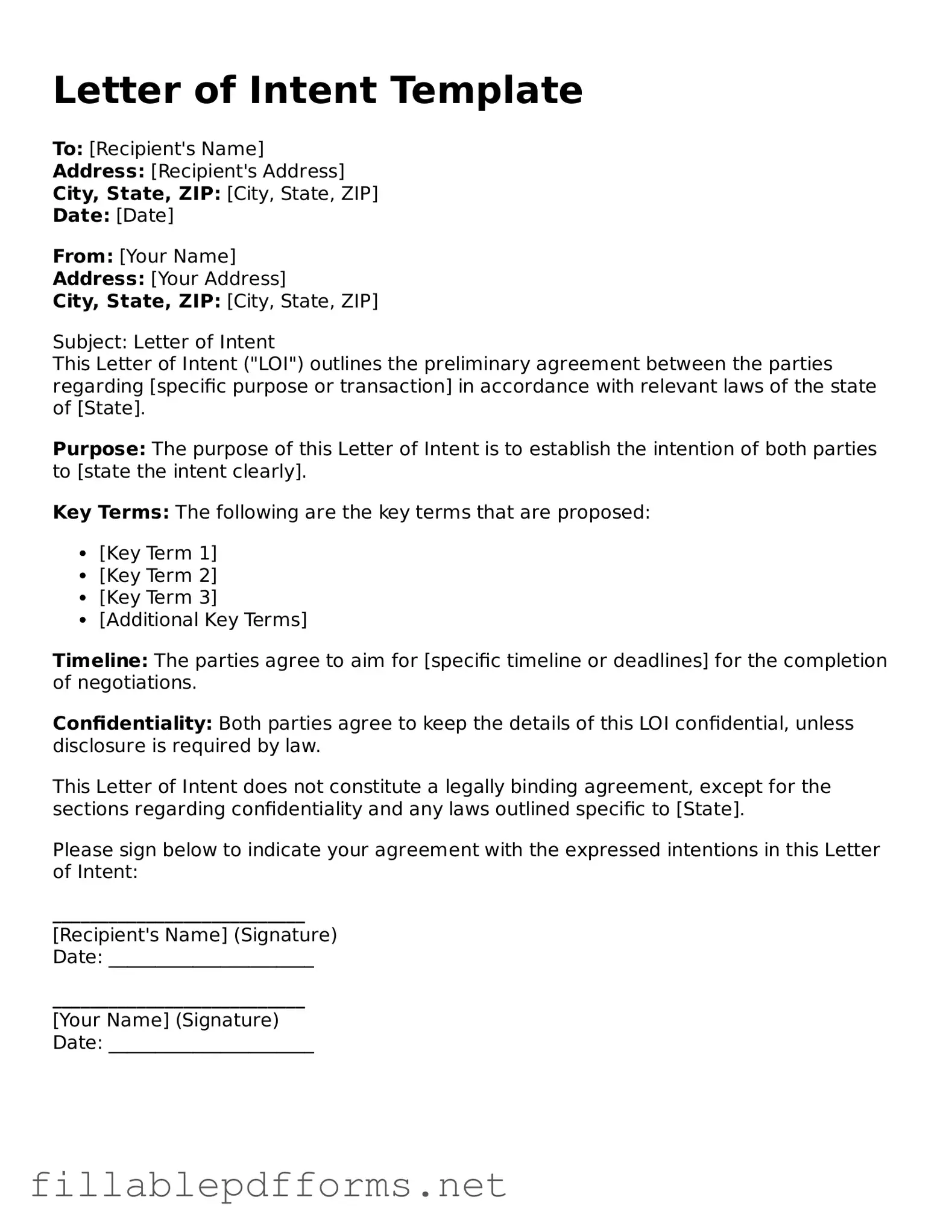Blank Letter of Intent Template
A Letter of Intent (LOI) is a document that outlines the preliminary understanding between parties who intend to enter into a formal agreement. It serves as a roadmap, guiding the negotiations and clarifying the key terms and conditions before a binding contract is finalized. While not legally binding in most cases, an LOI can set the tone for the relationship and establish expectations for both sides.
Launch Editor Here
